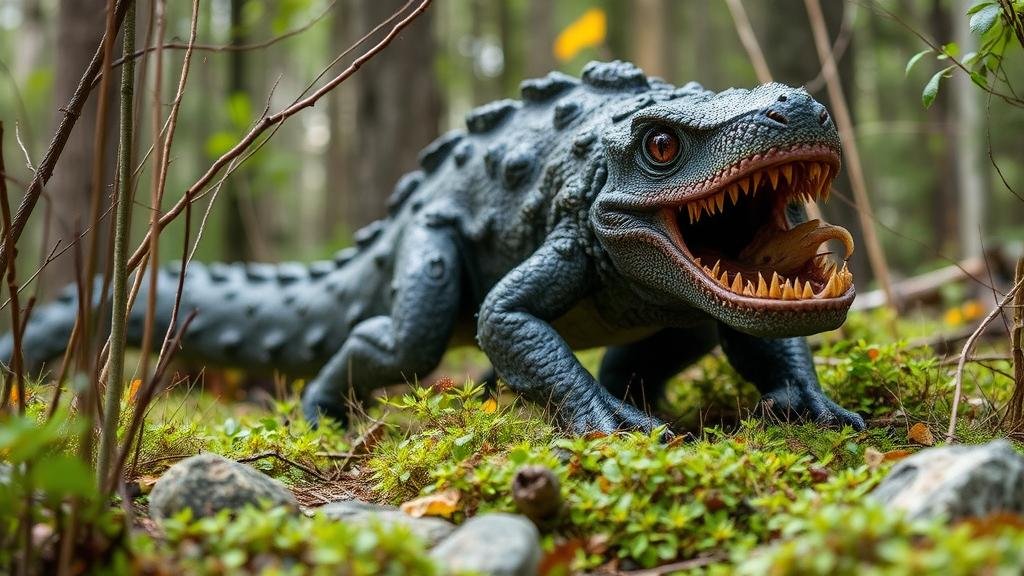Documenting the biodiversity of cryptid habitats during cryptozoological expeditions.
Documenting the Biodiversity of Cryptid Habitats During Cryptozoological Expeditions
Cryptozoology, often viewed as a fringe science, seeks to uncover hidden animals whose existence is not verified by mainstream biology. These so-called cryptids–such as Bigfoot, the Loch Ness Monster, and the Chupacabra–are believed to inhabit diverse ecosystems around the globe. Documenting the biodiversity of these habitats during expeditions is essential not only for understanding these elusive beings but also for preserving the ecosystems they occupy. This article explores the methods, significance, and case studies of documenting biodiversity in cryptid habitats.
The Importance of Biodiversity Documentation
Documenting biodiversity in the habitats of cryptids yields numerous benefits that extend beyond cryptozoological pursuits. Here are some key reasons why this practice is crucial:
- Ecological Health: Biodiversity is an indicator of ecosystem health. By studying these habitats, researchers can assess environmental changes.
- Conservation Efforts: Understanding the species present helps in the formulation of effective conservation strategies for endangered and unknown species.
- Scientific Research: Biodiversity documentation can lead to the discovery of new species and help clarify the roles they play within their ecosystems.
Methods for Documenting Biodiversity
Various methodologies can be employed during expeditions to effectively document biodiversity in cryptid habitats. e include:
- Field Surveys: Regular exploratory surveys involve habitat assessment, collection of specimens, and observation of animal behavior.
- Camera Traps: Utilizing motion-sensor cameras allows researchers to capture images and videos of wildlife, including potential cryptid sightings, without human interference.
- Environmental DNA (eDNA) Sampling: This innovative technology involves collecting samples from soil or water to analyze genetic material, helping to identify species present in an area.
Case Studies: Notable Expeditions
Several expeditions have highlighted the importance of documenting biodiversity in areas known for cryptid sightings. Below are notable examples:
- The Himalayan Yeti Investigation (2013): Conducted in the remote heights of Nepal, researchers collected samples and documented the diverse flora and fauna. The expedition aimed to gather evidence of the Yeti while also assessing the health of mountainous ecosystems.
- Project Ark in the Loch Ness (2006): This endeavor involved the use of sonar and large-scale netting to identify species in Loch Ness, promoting the preservation of the biodiversity around the famed lake while searching for evidence of Nessie.
- Chupacabra Expedition in Puerto Rico (2015): Documenting the habitats of this mythical creature, researchers mapped out specific regions where livestock were typically found dead and collected biological samples to ward off misidentifications of wildlife.
Real-World Applications and Future Directions
The documentation of biodiversity in cryptid habitats has real-world applications that tie directly into broader ecological and scientific inquiries. For example, findings from these expeditions can influence wildlife management policies, lead to new conservation initiatives, and spark public interest in biological research.
Also, the integration of modern technologies such as geographic information systems (GIS) and bioinformatics aids researchers in visualizing data, analyzing species distribution, and predicting potential habitats for cryptids based on environmental variables. As new techniques continue to emerge, the collaboration between cryptozoologists and conservation biologists can foster a more comprehensive understanding of unexplored ecosystems.
Actionable Takeaways
For those interested in cryptozoological expeditions or biodiversity documentation, consider the following actionable steps:
- Participate in Citizen Science: Engage with local conservation efforts or cryptozoological societies that focus on biodiversity documentation.
- Use Technology: Use tools such as smartphone apps for species identification and mapping tools to contribute to data collection.
- Stay Informed: Keep up with recent developments in both cryptozoology and ecological research to align your efforts with current scientific standards.
To wrap up, documenting the biodiversity of cryptid habitats during expeditions serves as a cornerstone for understanding not just these legendary creatures, but also the rich ecosystems they inhabit. As researchers continue to bridge the gap between myth and science, the data collected during these ventures will aid in the protection of biodiversity for generations to come.



